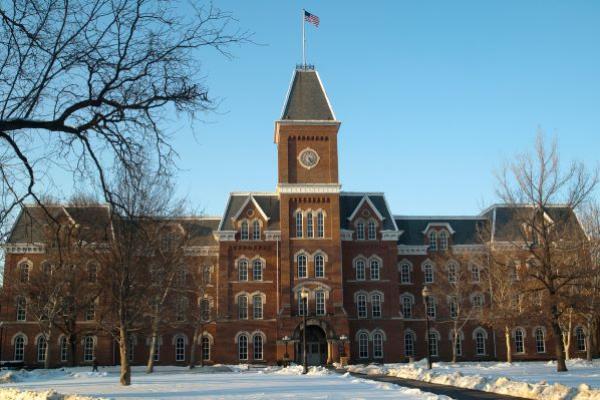College of Arts and Sciences awards five Instrumentation and Infrastructure Grants

Research and creative activity are often impossible without the right equipment, and the College of Arts and Sciences is stepping up to help faculty members replace outdated instrumentation, upgrade existing infrastructure or purchase new equipment for their work.
The Arts and Sciences Research Instrumentation and Infrastructure Grant Program annually offers $25,000-500,000 grants to tenure-track faculty members across college departments. This year, five proposals in the physical sciences, social sciences and the arts were awarded funding.
“This new grant program supports a core mission of our college,” said David Horn, dean of the College of Arts and Sciences. “Research and creative collaborations, especially across disciplinary boundaries, often depend on access to sophisticated technologies that cannot readily be funded by an external grant. We are filling those gaps to accelerate our progress toward research distinction.”
Stephen Gavazzi, director of CHRR at Ohio State, and CHRR IT director Nick Ramser received funding to upgrade hardware for their Data Repository and Data Enclave research services, which will enable secure and scalable access to sensitive research data and ensure resources are available to support data-intensive computational analyses.
“The order for the system has already been placed, so CHRR and its clients will be positively impacted by this award in the very near future,” said Gavazzi.
Robert Baker, professor in the Department of Chemistry and Biochemistry and director of the NSF NeXUS Facility, received funding for a scanning electron microscope with energy-dispersive X-ray capabilities. The instrument brings essential research support back into the department and will complement existing capabilities such as X-ray photoelectron spectroscopy and atomic force microscopy jointly housed in the Surface Analysis Lab.
“We are grateful for the strong support from the College of Arts and Sciences to procure this scanning electron microscope,” said Baker. “Combining high spatial resolution, element-specific x-ray analysis and wide sample compatibility, this instrument will enable new collaborations, support industry users and advance the cutting-edge research of faculty across multiple departments and colleges at Ohio State.”
Roland Kawakami, professor in the Department of Physics, will add an HQ Graphene Automated Transfer Tool to the NanoSystems Laboratory (NSL), which will advance research capabilities for a number of Arts and Sciences faculty in physics and related disciplines. The tool will also be accessible to other on-campus and off-campus users through the NSL.
“This tool allows users to pick up and stack atomically thin, two-dimensional materials to make stacked heterostructures of vastly dissimilar materials such as 2D semiconductors, 2D magnets and 2D superconductors, which enables exciting studies in quantum phenomena,” Kawakami said. “Importantly, the tool will be located in a glovebox with an inert air-free environment to prevent sample oxidation and is fully motorized and automated for ease of use.”
Melisa Diaz, assistant professor in the School of Earth Sciences, will purchase a benchtop ED-X-ray fluorescence spectrometer, which can measure the concentrations of certain elements in the periodic table. The instrument will enhance research and experiential learning in the college, offering students valuable hands-on training in geochemical techniques, better preparing them for technical careers and offering opportunities for future course development.
“Geology has been part of Ohio State’s curriculum since its establishment and has evolved with advancements like X-ray fluorescence (XRF), which enhances material characterization,” Diaz said. “This grant restores XRF analysis capability to the School of Earth Sciences, re-enabling the measurement of element concentrations in solid samples across a variety of disciplines. In my research specifically, we will use the new XRF to quantify the chemical weathering of sediments found on ice in Antarctica.”
Tina Tallon, assistant professor in the School of Music, will use the grant to construct a 24-channel immersive spatial audio system for high-resolution, data-driven research into how humans and computers recognize and process music and other sounds. The system will be housed in the School of Music’s existing Electroacoustic Music Studio.
“Recent developments in machine learning allow us to analyze far richer data streams than ever before,” Tallon said. “This research will have impacts on creative expression, but it will also advance technologies with applications in health, education and industry. I’m very grateful to the college for funding this research, and for its dedication to supporting inter- and multidisciplinary research that includes the creative arts.”
Submissions for the Arts and Sciences Research Instrumentation and Infrastructure Grant Program are due annually at 5 p.m. EST on Oct. 1. Proposals submitted after the deadline are considered in the following IIGP cycle.
